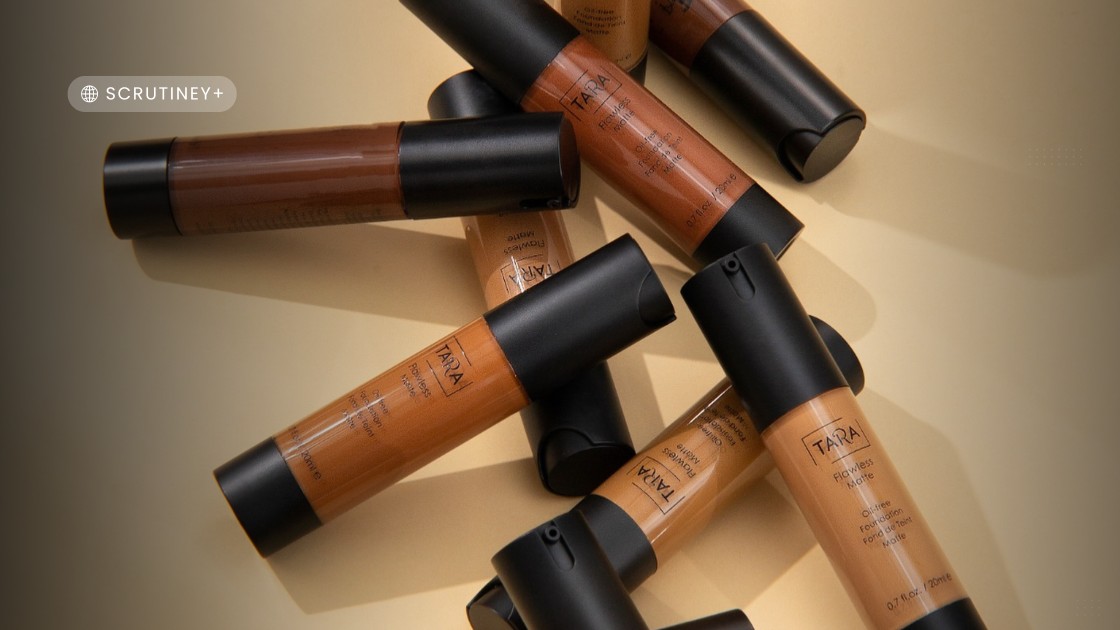In the ever-evolving world of marketing, one trend that has captured the attention of both brands and consumers alike is the rise of influencer trips. But now, brands are taking it a step further by inviting not just influencers, but their very own loyal customers to these luxurious getaways.
It’s a subtle but significant shift, one that speaks volumes about how brands are evolving to meet the changing attitudes of consumers. So why are companies making this shift, and what do they stand to gain?
Let’s dive into this fascinating trend and uncover the reasons why inviting customers on influencer trips is becoming a key strategy for brands looking to build deeper connections and drive authenticity.
The Power of Experiential Marketing
We live in an age where experiences trump products. From Coachella to brand-hosted retreats, consumers crave immersive, unforgettable moments that connect them emotionally to the brand. This is where experiential marketing—creating opportunities for customers to engage with a brand through a curated experience —comes into play.
In the past, these experiences were mainly reserved for influencers with seven-figure followings, whose social clout could be leveraged to market the brand through glamorous Instagram posts and YouTube vlogs with stunning views, luxury hotels, and curated experiences meant to inspire consumer desire. Think of lavish trips to Bora Bora or Dubai where influencers post about their once-in-a-lifetime experience.
But what if the most loyal customers could have that same experience? By inviting them on these trips, brands are turning their best customers into advocates with an authentic story to tell.
However, as the cost of living continues to rise and consumer sentiment shifts, these exclusive, often extravagant trips have faced increasing backlash. People began to question the value of such excess, especially during times of economic hardship. In response, brands are democratizing these experiences by inviting regular customers to join influencers on these trips. This trend, seen with brands like Refy, Topicals, and Tarte, is a clear move toward inclusivity, fostering a deeper connection with their broader audience.
What is a Community Trip?
A community trip reimagines the traditional influencer getaway by integrating loyal customers into the mix. Instead of focusing solely on influencers with large followings, these trips include a diverse group of attendees—micro-influencers, content creators, and everyday customers. The term “community” speaks to the idea of shared experiences and collaboration between the brand and its audience.
Why Customers?
Loyal customers are often the silent powerhouse of a brand. They don’t just buy products—they live the brand. Think about it: A regular customer who passionately uses a product can speak about it more genuinely than even the most well-known influencer. These people have already invested their time and money into the brand, which means their praise carries more authenticity than a paid partnership ever could.
The Power of Customer-Generated Content
When regular customers are invited to brand trips, they bring something influencers often can’t: genuine, authentic enthusiasm. While influencers are accustomed to creating polished content as part of their job, customers bring an unfiltered and heartfelt passion for the brand. This leads to highly authentic user-generated content (UGC), which studies show is more trusted by consumers than traditional advertising.
According to a study by Edelman, 81% of consumers need to trust a brand before they make a purchase.
Trust comes from authenticity, and there’s nothing more authentic than seeing real, everyday customers celebrating a product or service. When a loyal customer shares their experience on social media from a brand-sponsored trip, their network sees a person they know—not a paid celebrity—enjoying and advocating for a product.
Brands like Glossier and Alo Yoga have embraced this trend. They’ve invited long-term, passionate customers on exclusive trips, offering them the chance to connect with influencers, brand leaders, and other community members. The result? Customers become living, breathing ambassadors of the brand, often sharing their unique experiences with enthusiasm and trustworthiness.
Real-World Examples: When Brands Get It Right
Several brands have pioneered this customer-inclusive model and found tremendous success. Here are a few notable examples:
1. Sephora Squad’s Loyalty Trips
Beauty giant Sephora took influencer marketing to the next level by launching their Sephora Squad, a collective of loyal customers and beauty enthusiasts. Sephora invited these individuals on branded trips, giving them VIP access to exclusive product launches and beauty experiences. The result? A wave of social media posts from authentic users reinforces Sephora’s image as a community-first brand.
2. Topicals: Rewriting the Influencer Trip
Topicals, a skincare brand known for its focus on social impact, invited customers to attend trips alongside influencers, including a retreat in the Hamptons and a luxurious getaway in France. By rebranding these trips as community experiences, Topicals created content that felt less like marketing and more like a celebration of shared values and interests.
3. Refy: A Villa in Mallorca
Refy, a beauty label founded by influencer Jess Hunt, hosted its first-ever community trip at a villa in Mallorca. Customers stayed alongside micro-influencers, participated in wellness activities like sound baths, and enjoyed personalized product experiences. By allowing followers to vote on the trip’s destination, Refy created an event that was not only exclusive but also deeply customer-centric.
4. Tarte’s Trippin’ With Tarte
For instance, when Tarte received backlash for its extravagant influencer trips, they responded by including regular customers in their Trippin’ With Tarte series. During one event, 13 contest-winning customers and their guests were flown to New York City for a Beyoncé concert, alongside influencers. Tarte now integrates customers into every event, such as their New York City trip, emphasizing that these experiences are designed to include their wider community. The result? Positive sentiment exploded online, and the brand found a way to balance the glitz of influencer culture with a more grounded, customer-first approach.
A New Kind of Influencer: The Everyday Consumer
This shift highlights a broader trend in marketing—customers are the new influencers. User-generated content (UGC) is now considered a more trustworthy and effective form of advertising than traditional influencer campaigns. According to a survey by Stackla, 79% of people say user-generated content highly impacts their purchasing decisions.
By bringing loyal customers on trips, brands harness this power and transform their everyday buyers into the ultimate influencers. Their excitement, stories, and shared experiences become marketing gold, giving brands the organic reach they crave.
The Impact on Brand Loyalty
Inviting customers on trips isn’t just a marketing stunt; it’s a long-term loyalty strategy. When customers feel personally connected to a brand, their loyalty deepens. They become invested in the brand’s success because they’ve become part of the story.
Take it from Brian Chesky, co-founder of Airbnb: “Build something 100 people love, not something 1 million people kind of like.” By investing deeply in a small, passionate subset of customers, brands can cultivate a loyal tribe that doesn’t just buy products—they become brand evangelists.
The Long-Term Impact: Customer Retention and Brand Loyalty
Bringing customers on influencer trips isn’t just a one-off strategy—it’s a long-term investment in customer retention and brand loyalty. When customers are invited to participate in these unique, once-in-a-lifetime experiences, their emotional connection to the brand deepens. They become not just customers, but brand advocates who are more likely to share their experiences and continue supporting the brand.
James McKeown, Refy’s brand experience and PR manager, explains that the goal of their community trips is to “keep aspiration alive,” but in a way that feels grounded and inclusive. By balancing the aspirational with the accessible, brands can create moments that resonate with a larger, more engaged audience.
Actionable Insights: How to Make This Work for Your Brand
If you’re a brand looking to explore community trips, here are a few actionable steps:
- Identify Your Brand Ambassadors: Find your most loyal customers. Use data from loyalty programs, social media, or direct customer feedback to identify those who truly resonate with your brand.
- Craft Unforgettable Experiences: The trip doesn’t have to be extravagant, but it should feel special. Whether it’s a weekend retreat or a VIP event, the key is creating something memorable that aligns with your brand values.
- Incorporate Storytelling: Encourage customers to share their experiences through authentic storytelling. Offer them tools to create content—whether that’s professional photography or behind-the-scenes access.
- Foster Community: The trip should foster a sense of community, not just between the brand and customers but also among the customers themselves. This builds lasting emotional connections that continue beyond the event.
- Measure the Impact: Track metrics such as social media engagement, user-generated content, and customer retention rates after the trip to gauge its success.
- Listen to Your Audience: Customer feedback is a goldmine for understanding how to adapt your marketing strategies. Tarte shifted its approach based on customer input, leading to a more inclusive and successful series of events.
- Blend Influencers with Customers: There’s no need to abandon influencers entirely. Instead, mix influencers with loyal customers to create a more balanced and authentic experience.
- Leverage UGC: Customers are natural content creators. Use their genuine excitement to fuel your brand’s UGC strategy, leading to organic and trustworthy marketing.
Conclusion: A New Way to Engage
As marketing continues to evolve, brands must find new and creative ways to engage their audience. Inviting customers on influencer trips is more than just a trendy tactic; it’s a powerful way to build trust, foster authenticity, and create lasting relationships.
Community trips are more than just a fleeting trend—they represent a shift in how brands approach influencer marketing and customer engagement. By inviting regular customers into spaces traditionally reserved for influencers, brands can foster deeper connections, generate authentic content, and build long-term loyalty.
So, as brands continue to evolve, expect to see more customers jet-setting to luxurious locales, not just influencers. And in this new era of marketing, everyone’s an influencer.
Thinking about hosting the perfect customer trip and need expert guidance on how to make it a big success, book our free 15-minute demo call here



